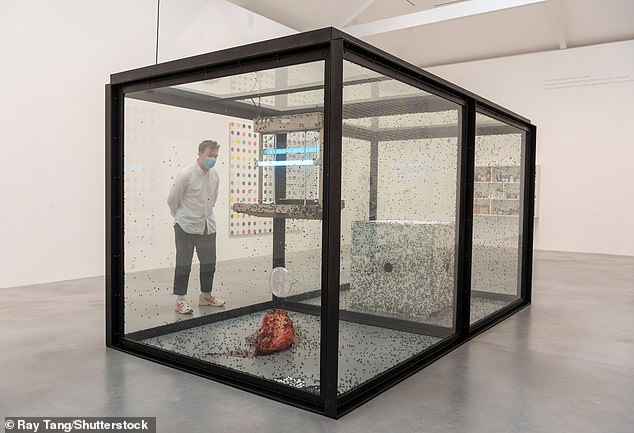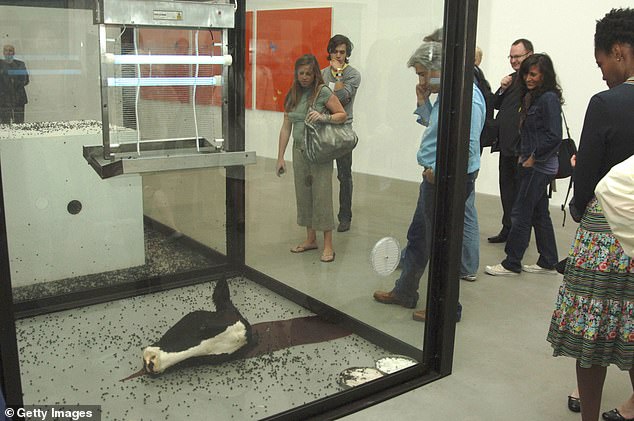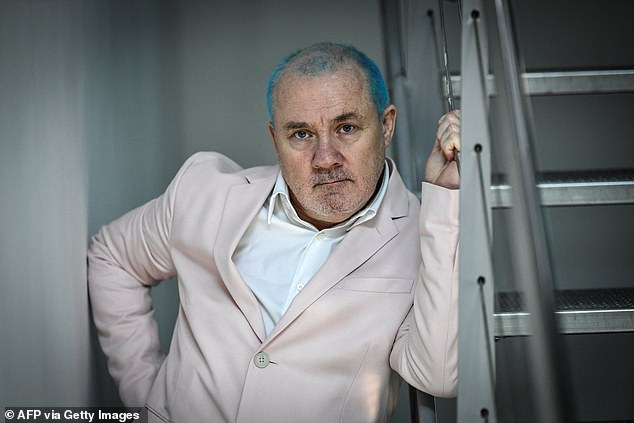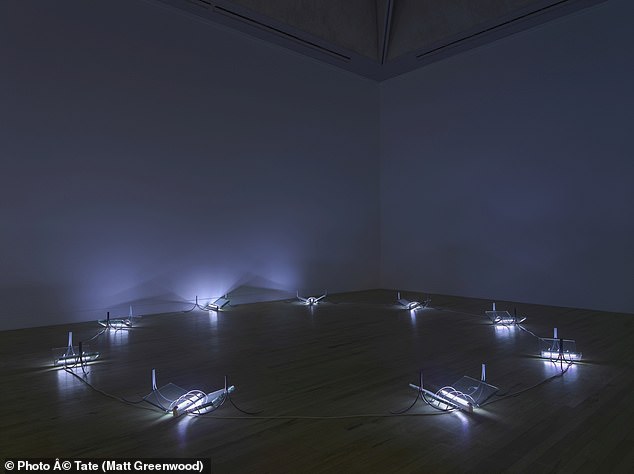Damien Hirst has been accused of stealing the idea of using live flies in his work from a fellow artist he went to college with in the 90s.
Hamad Butt made Fly-Piece, an artwork featuring live flies, which was considered among the ‘earliest works of bio-art in the UK’ when it was shown at his degree show in June 1990, The Times first reported.
Just a month later Hirst, who was at the time an unknown artist who had also studied at Goldsmiths, University of London, released A Thousand Years, which showcased an army of flies feasting on a cow’s head.
Renowned collector Charles Saatchi was reportedly amazed by the exhibition and decided to purchase Hirst’s A Thousand Years.
The famous artist then spent years producing bio-art including his Natural History series, as well as The Physical Impossibility of Death in the Mind of Someone Living.
Meanwhile, Butt tragically died in 1994 aged just 32 after contracting Aids.
While Hirst has been accused of copying Butt’s idea before, a new London exhibition of the late artist’s work has brought the claims back to the surface.
In a catalogue for the exhibition at the Whitechapel Gallery, curator Dominic Johnson penned that Hirst’s A Thousand Years ‘appears to have directly appropriated from Butt’.
He added: ‘Friends and family recall Butt felt this was the case and that he was unhappy when Hirst’s sculpture received greater acclaim.’

Damien Hirst’s A Thousand Years, which showcases an army of flies feasting on a cow’s head

Guests attend the Damien Hirst: ‘A Thousand Years and Triptychs’ private view at the Gagosian Gallery on June 20, 2006

Damien Hirst (pictured) is arguably the most influential living British artist today

Hamad Butt, a lesser-known artist, studied alongside Hirst and created one of the ‘earliest works of bio-art in the UK’. Pictured: One of his works
Mr Johnson claimed Hirst ‘likely encountered Butt’s piece first-hand in its development’, with their time as students at Goldsmiths allegedly overlapping for two years.
Hirst’s representatives reportedly said the artwork may have appeared in an earlier Modern Medicine exhibition, held before Butt revealed his Fly-Piece.
But this was still understood to be after Butt developed his prototype while studying at Goldsmiths, with Hirst a fellow student.
Hirst, who is arguably the most influential living British artist, has been hit with plagiarism claims on more than one occasion – previously making a ‘goodwill payment’ to a designer.
Additionally, he has also faced damages claims in US courts for alleged copying.
MailOnline has approached Hirst for comment.












